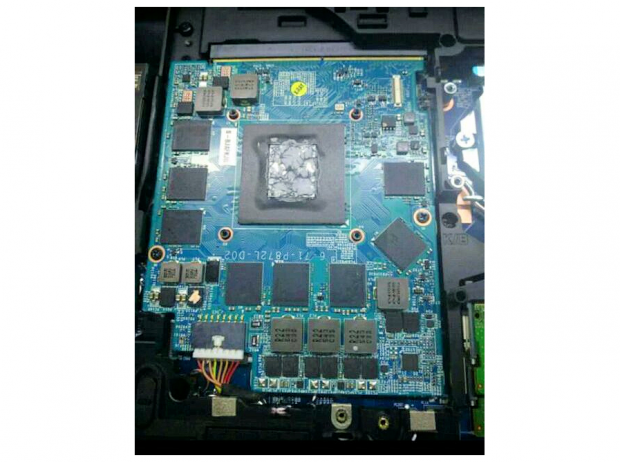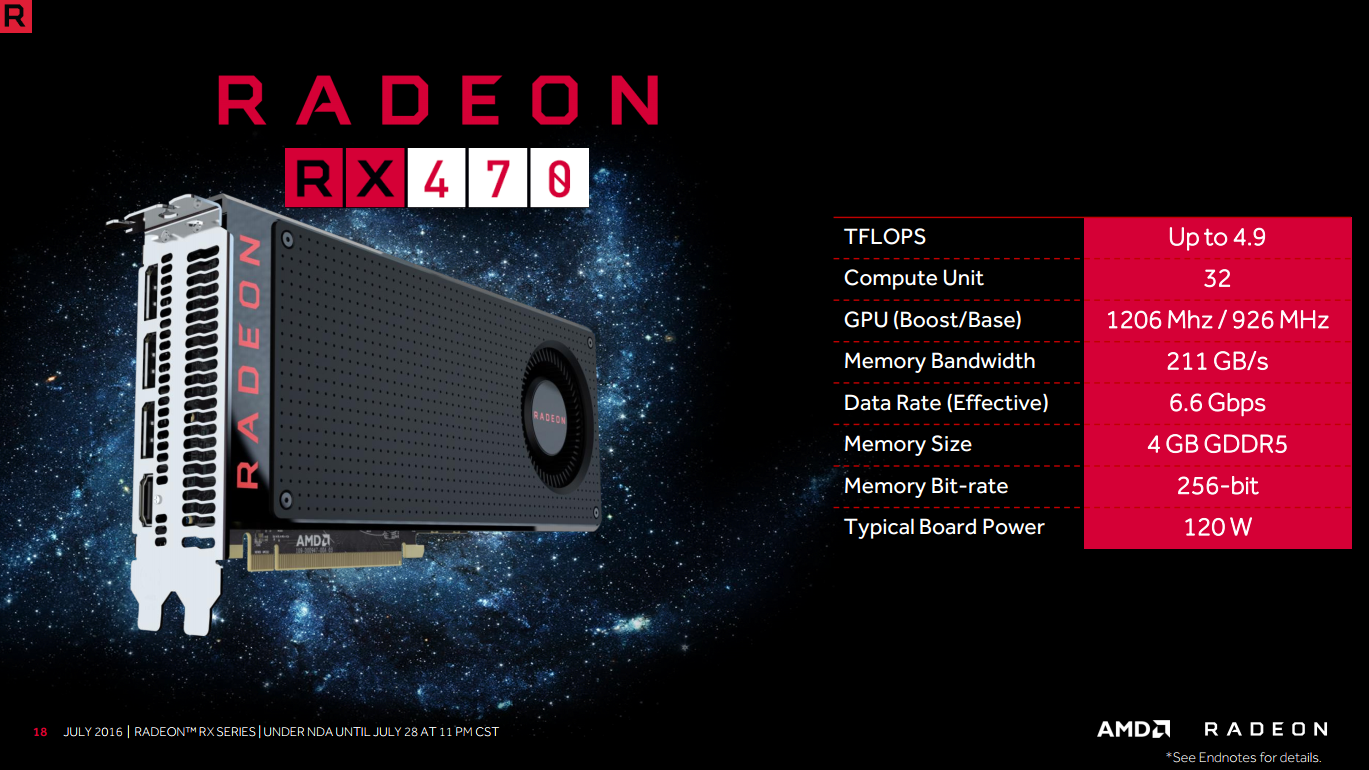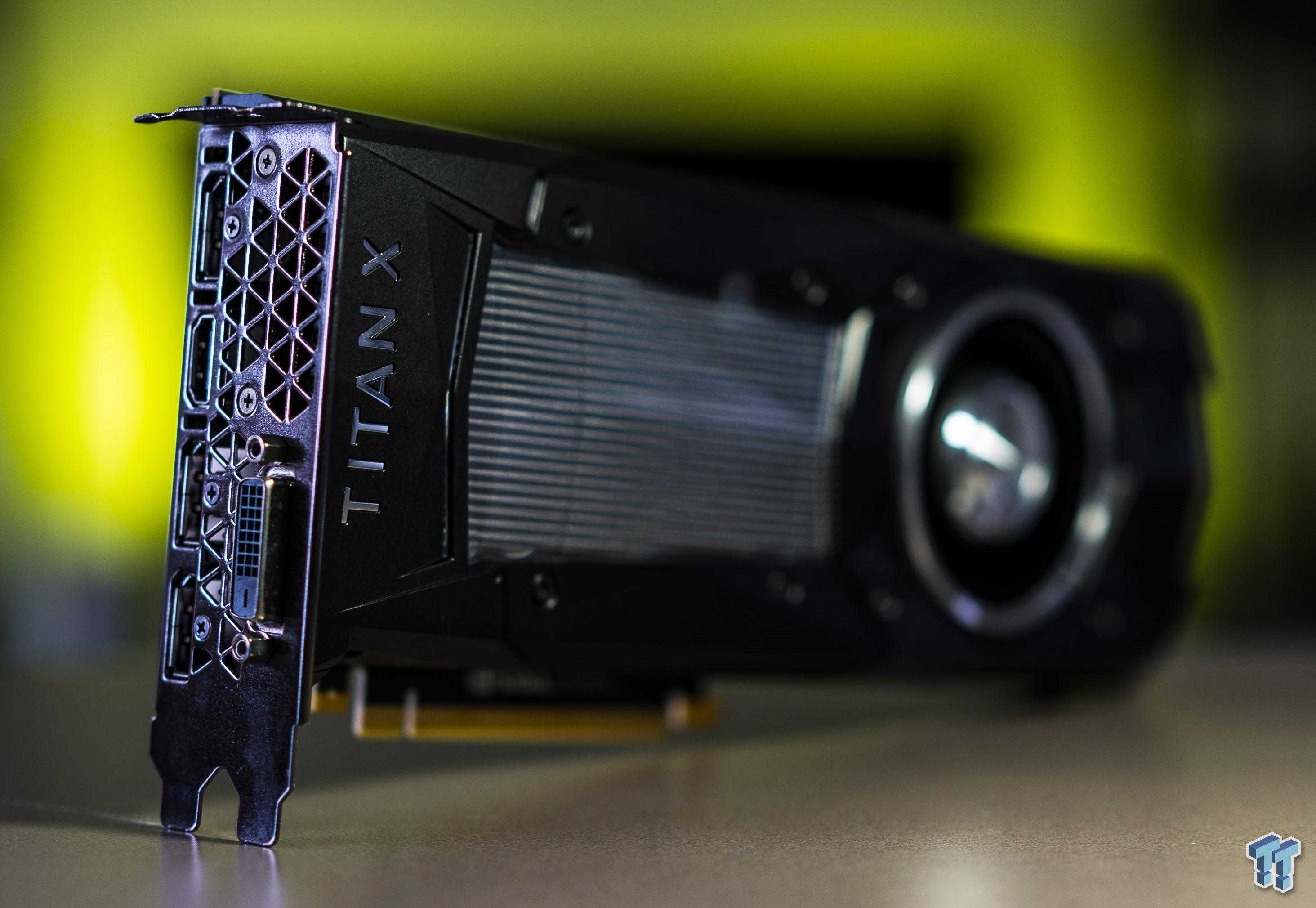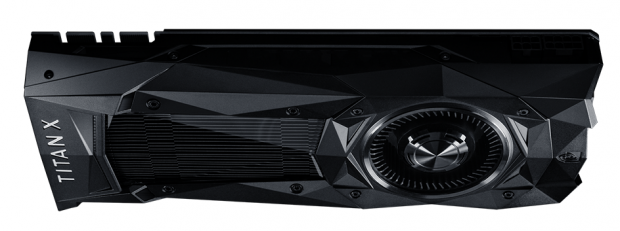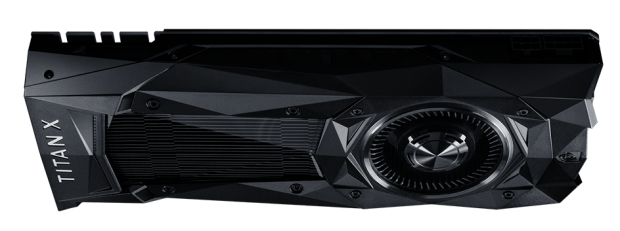Video Cards & GPUs News - Page 313
NVIDIA's mobile GeForce GTX 1080, GTX 1070 detailed
NIVDIA is on the eve of launching its mobile GeForce GTX 10 series graphics cards, with VideoCardz providing some new details on what the mobile versions of Pascal will deliver.
According to the site, Clevo is already teasing its GeForce GTX 1080 and GeForce GTX 1070 powered gaming notebooks, which can be configured up to the desktop Core i7-6700K processor. Clevo's new P870DM3-G gaming laptop will arrive with a 17.3-inch display that can be optioned as a 1080p or 4K panel, both with NVIDIA G-Sync technology. There will be support for up to 64GB RAM, but we're all here to know how fast the mobile GeForce GTX 1080 and GeForce GTX 1070 is, right?
We know that the mobile GeForce GTX 1070 will feature more CUDA cores than its desktop counterpart, as they would be trying to reach the same performance in a notebook, as we have on a desktop. This would be an interesting move, as it means NVIDIA is not cutting down the GTX 1070, but beefing it up in CUDA cores. As for the VRAM, we're expecting the full 8GB of GDDR5 clocked at 8GHz, with a 256-bit memory bus and 256GB/sec memory bandwidth - not too damn bad for a gaming notebook, huh?
Continue reading: NVIDIA's mobile GeForce GTX 1080, GTX 1070 detailed (full post)
NVIDIA's mobile GeForce GTX 1070 nearly as fast as desktop GTX 980 Ti
NVIDIA is preparing some pretty delicious mobile GeForce GTX 1070 graphics card, and according to the latest rumors it could offer similar performance to the desktop GeForce GTX 1070, and nearly as fast as the desktop GeForce GTX 980 Ti.
This means the upcoming mobile GTX 1070 would be faster than the current GTX 980 that's for notebooks, but to be nearly as fast as the desktop GTX 980 Ti, which is considerably faster than the GTX 980? Impressive stuff. The report has the GPU clock on the mobile GeForce GTX 1070 reaching 1822MHz, while the typical boost sits at 1645MHz.
We should hear more information on the mobile GeForce GTX 10 series soon, but if this rumor turns out to be true, we could be in for some seriously fast gaming notebooks that could also be thinner and more power efficient.
Continue reading: NVIDIA's mobile GeForce GTX 1070 nearly as fast as desktop GTX 980 Ti (full post)
AMD's new Radeon RX 470 unleashes 1080p 60FPS gaming for just $179
AMD has officially launched its new Radeon RX 470, the second graphics card powered by the new Polaris architecture and made on the 14nm FinFET process. AMD's new Radeon RX 470 starts at $179 and is capable of 1080p 60FPS gaming on a 120W TDP. I have received a few Radeon RX 470 models, with the SAPPHIRE Nitro RX 470 4GB review going up very soon - but I thought I'd brief you on what to expect from the new $179 graphics card from AMD.
Inside, we have 2048 stream processors with up to 4.9 TFLOPs of performance and 32 compute units, this is joined by 4GB or 8GB of GDDR5 RAM at up to 7Gbps on a 256-bit memory bus, providing 211GB/sec memory bandwidth.
The Polaris architecture is about as future-proof as you can get, including DisplayPort 1.4 which supports up to 8K 30Hz displays as well as 4K 120Hz which isn't far away. HDMI 2.0 is finally here, after the Fiji architecture being let down without 4K 60FPS support through HDMI 1.4 at the time. We also have HDR display, which will allow High Dynamic Range monitors to provide Polaris-based graphics cards like the Radeon RX 470 with an experience that really is like no other. The Radeon RX 470 has FreeSync support, with over 80 monitors powered by FreeSync now on the market.
Continue reading: AMD's new Radeon RX 470 unleashes 1080p 60FPS gaming for just $179 (full post)
NVIDIA's new Titan X is 50% faster than GTX 1080 at 11,520 x 2160
My review of NVIDIA's new Titan X graphics card will be up in the next couple of hours, and it's completely glowing - due to the fact that the Pascal-based $1200 graphics card has amazing performance.
But, I like the push the boundaries of everything that I test, so I set up my triple 4K monitor rig and cranked the resolution up to 11,520 x 2160 and tested out the new Titan X to see if it would have the same ~20% or so performance benefit over the GP104-based GeForce GTX 1080. Well, I was wrong - it's faster than that, with a huge 51.4% lead in Heaven so far.
I'm currently testing a few other games at 11,520 x 2160 and will write a full article up once it's done - but for now, a 51.4% increase in Heaven at this mammoth resolution is making me weak at the knees.
Continue reading: NVIDIA's new Titan X is 50% faster than GTX 1080 at 11,520 x 2160 (full post)
NVIDIA is already sold out of its new Titan X, priced at $1200
NVIDIA's new Titan X was launched in the last few hours, and while it's priced at a wallet-busting $1200 - it has already sold out on NVIDIA's website.
NVIDIA's GeForce.com website is the only place in the world where you can buy the Titan X graphics card on its own, and I've just checked the site to get some detailed specifications for my own review (which is coming as fast as my fingers can type) - and it is listed as "Out of stock".
The new Titan X is a monster of a graphics card, with 12GB of GDDR5X (up from the 8GB on the GTX 1080) and a nice bump in performance over the impressive GTX 1080. We'll have some content on it flowing in the next few days, but considering they're already sold out - I'm blown away with the response so far.
Continue reading: NVIDIA is already sold out of its new Titan X, priced at $1200 (full post)
AMD's Radeon 16.7.3 drivers released, lots of bug fixes/improvements
AMD has released its new Radeon Software Crimson Edition 16.7.3 drivers, which include the usual bug fixes and performance improvements. You can download them right here.
Rise of the Tomb Raider enjoys another 10% performance on the Radeon RX 480 graphics card, thanks to the new RSCE 16.7.3 drivers. But there's also a bunch of bug fixes for popular games like Overwatch, Hitman, Total War: Warhammer, Dirt Rally, DOOM, and more. More games than ever have been fixed or improved with the RSCE 16.7.3 drivers.
If you want to check out all of the fixed and known issues with the new RSCE 16.7.3 drivers, check out AMD's support page.
Continue reading: AMD's Radeon 16.7.3 drivers released, lots of bug fixes/improvements (full post)
NVIDIA reportedly unveiling its mobile GTX 10 series GPUs at Gamescom
NVIDIA is reportedly preparing for the launch of its mobile GeForce GTX 10 GPUs for later this month, with NVIDIA allowing its notebook partners to unveil Pascal-powered gaming notebooks between August 17-21, when Gamescom 2016 takes place.
In terms of specifications, we don't know what to expect with the mobile GeForce GTX 1080, but we should expect it to be nearly identical to its desktop counterpart. Last year, NVIDIA unleashed the desktop GTX 980 for notebooks, providing desktop GTX 980 performance inside of a gaming notebook, and it was beyond impressive.
DigitTimes is behind the report, saying that ASUS, MSI, GIGABYTE and Clevo will have their new gaming notebooks on show with NVIDIA's new Pascal-based GeForce GPUs inside. DigiTimes adds that NVIDIA will remove the 'M' from the mobile GPUs in order to provide a streamlined path to GeForce graphics cards on both the desktop, and mobile side of things.
Continue reading: NVIDIA reportedly unveiling its mobile GTX 10 series GPUs at Gamescom (full post)
NVIDIA's new Titan X beats GTX 1080 by 29% at 4K in 3DMark
The release of NVIDIA's next-gen Titan X is right around the corner, with some leaked 3DMark results to whet our appetite before it launches on August 2. There aren't many samples being sent to reviewers, where I personally do not have a card - but I will be trying!
Now we're within a day of the launch, leaked 3DMark results are here to tease the performance of the Pascal-based Titan X graphics card. VideoCardz got its hands-on some 3DMark results, running the Fire Strike Performance and Fire Strike Ultra runs of 3DMark with some bloody impressive results.
The new Titan X scores 26,660 in 1080p run of Fire Strike versus the 21,603 from the GeForce GTX 1080 - an increase of 23%. In the 4K run of Fire Strike, the new Pascal-based Titan X beats the GeForce GTX 1080 by 29% - with the Titan X scoring 6532 against the GTX 1080 with 5043.
Continue reading: NVIDIA's new Titan X beats GTX 1080 by 29% at 4K in 3DMark (full post)
The new Titan X is up to 200% faster than the GeForce GTX Titan X
While NVIDIA hasn't sent us the new Pascal-based Titan X, there are some reviewers who have received their GP102-powered graphics card and are throwing it into synthetic testing to see how fast it really is.
The synthetic benchmark side of Titan X that was used was CuDNN, offering a huge 200% increase over the previous GeForce GTX Titan X (note, the new Titan X is just that 'Titan X' with the GeForce GTX branding dropped from the name). The new Titan X is using a new implementation of CuDNN, so the speedup is from both the software, and the improved hardware on Titan X.
Specifications wise, the new Titan X has 16% more CUDA cores and 42% higher GPU clocks - so in raw horsepower, we have a decent amount of hardware improvements. According to the benchmarks, we can expect the new Titan X to be 74% to 91% faster in Alexnet, 76% to 200% on OverFear, 74% to 84% on Inception and 91% to 98% in VGG.
Continue reading: The new Titan X is up to 200% faster than the GeForce GTX Titan X (full post)
AMD details their new Radeon RX 470 and RX 460 graphics cards
When AMD launched the Radeon RX 480 earlier this month, we saw the company focus on the $100-$300 market. Starting with a bang, AMD's first Polaris-based graphics card started at just $199 and now the cheaper, but still VR-ready graphics cards are here.
The new Radeon RX 470 and RX 460 have been detailed by the company, and will be released on August 4 and August 2, respectively. The Radeon RX 470 is a small graphics card, packing the Polaris architecture and promising to deliver 60FPS+ with AA enabled in nearly all of the best-looking games on the market at 1080p.
AMD's new Radeon RX 470 packs up to 4.9TFLOPS of performance with the GPU clocks at 926/1206MHz base and boost clocks, respectively. There's 4GB of GDDR5 RAM clocked at 6.6GHz on a 256-bit memory bus that is capable of 211GB/sec, and it all comes within a 120W TDP. This card is going to be immensely popular with gamers where NVIDIA's GeForce GTX 1060 which starts at $249, and with gamers who don't want to spend over $199 but want 1080p 60FPS performance.
Continue reading: AMD details their new Radeon RX 470 and RX 460 graphics cards (full post)


